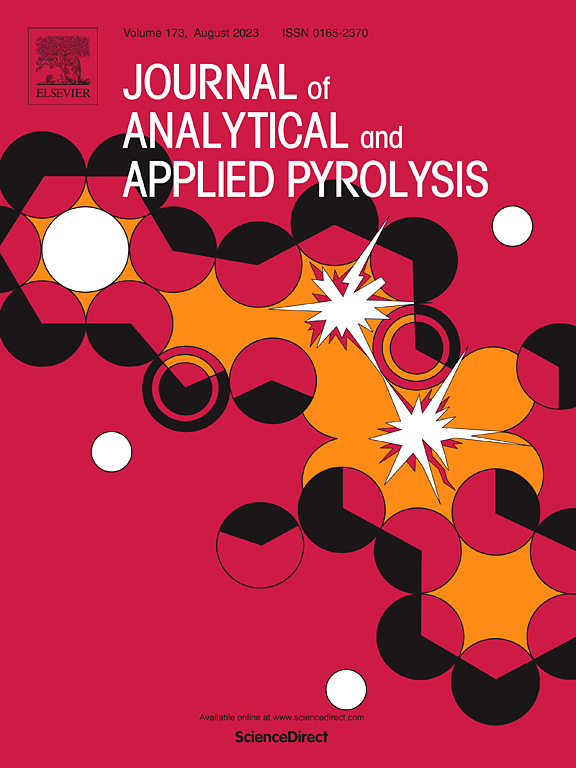纤维素与LDPE共热解机理研究:活化能变化与官能团演化
IF 6.2
2区 化学
Q1 CHEMISTRY, ANALYTICAL
引用次数: 0
摘要
采用热重分析仪(TGA)对纤维素(CE)、低密度聚乙烯(LDPE)及其混合物进行了质量比为7:3的热解实验。采用Flynn-Wall-Ozawa (FWO)和Kissinger-Akahira-Sunose (KAS)模型对反应体系的活化能变化进行了综合分析。利用TG-IR研究热解挥发物官能团的变化,利用原位红外光谱分析固体基质中官能团的演化机理。结果表明,CE与LDPE共热解分为两个阶段:纤维素为主热解阶段(200-400 °C)和纤维素炭与LDPE共热解阶段(400-500°C)。在低温阶段(~ 350℃),LDPE热解产生的中间体促进了CE中挥发物的释放,与单独热解CE相比,最大失重率提高了约10.61 %。此外,这些中间体还促进了CE热解过程中形成的焦炭中官能团的去除。本文章由计算机程序翻译,如有差异,请以英文原文为准。
Mechanistic study on the co-pyrolysis of cellulose and LDPE: Activation energy variations and functional group evolution
The pyrolysis experiments of cellulose (CE), low-density polyethylene (LDPE), and their mixture at a mass ratio of 7:3 were carried out using a thermogravimetric analyzer (TGA). The Flynn-Wall-Ozawa (FWO) and Kissinger-Akahira-Sunose (KAS) models were employed to comprehensively analyze the activation energy variations in the reaction system. TG-IR was used to investigate the changes in the functional groups of pyrolysis volatiles, while in-situ infrared spectroscopy was utilized to elucidate the evolution mechanism of functional groups in the solid matrix. The results demonstrated that the co-pyrolysis of CE and LDPE occurs in two distinct stages: predominant cellulose pyrolysis (200–400 °C) and the co-pyrolysis of cellulose char and LDPE (400–500 °C). In the low-temperature stage (∼350 °C), intermediates generated from LDPE pyrolysis facilitated the release of volatiles from CE, resulting in an increase of approximately 10.61 % in the maximum weight loss rate compared to the pyrolysis of CE alone. Additionally, these intermediates also promoted the removal of functional groups from the char formed during CE pyrolysis.
求助全文
通过发布文献求助,成功后即可免费获取论文全文。
去求助
来源期刊
CiteScore
9.10
自引率
11.70%
发文量
340
审稿时长
44 days
期刊介绍:
The Journal of Analytical and Applied Pyrolysis (JAAP) is devoted to the publication of papers dealing with innovative applications of pyrolysis processes, the characterization of products related to pyrolysis reactions, and investigations of reaction mechanism. To be considered by JAAP, a manuscript should present significant progress in these topics. The novelty must be satisfactorily argued in the cover letter. A manuscript with a cover letter to the editor not addressing the novelty is likely to be rejected without review.

 求助内容:
求助内容: 应助结果提醒方式:
应助结果提醒方式:


